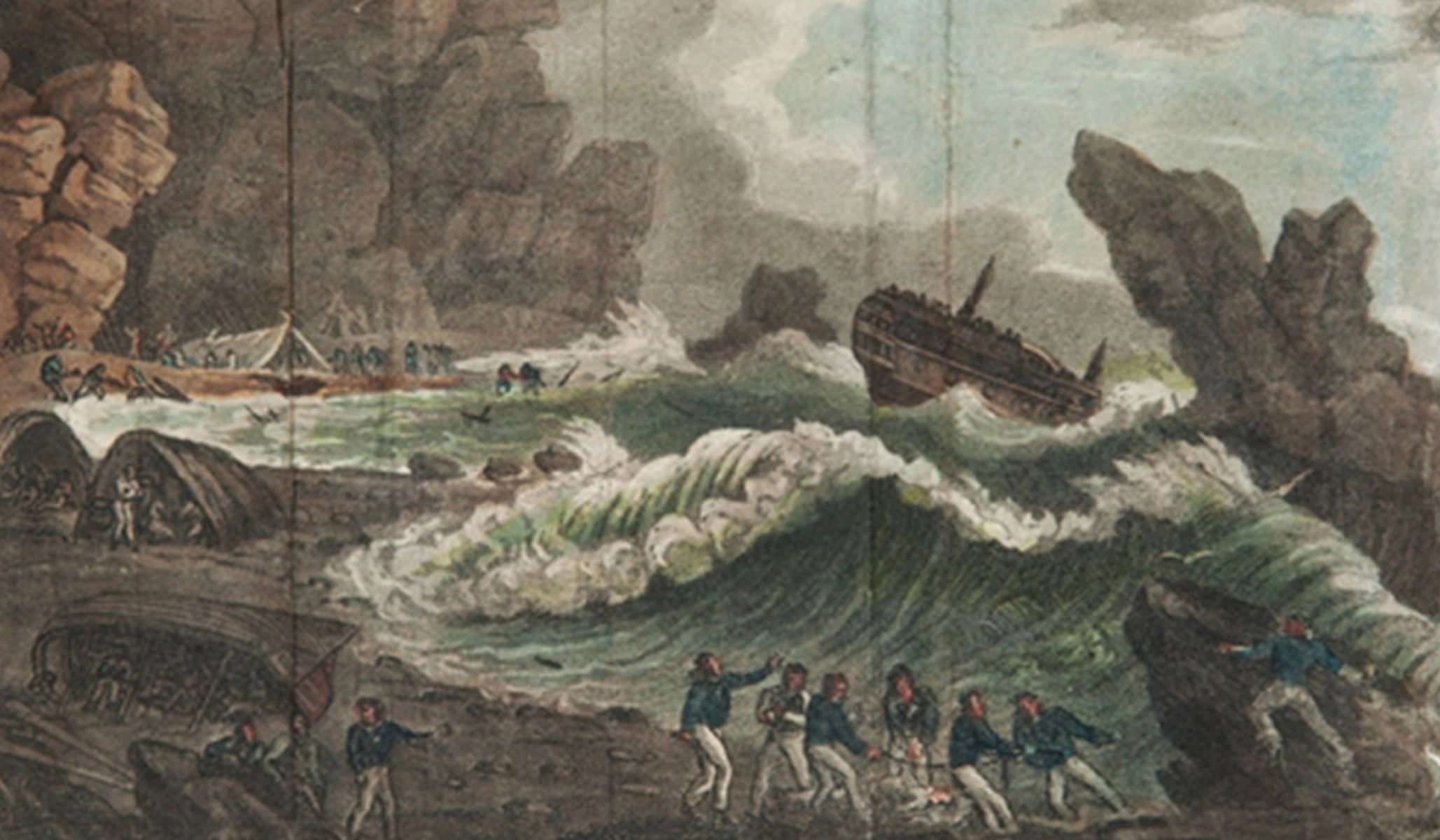David Grann’s book, The Wager, explores the idea that truth can be stranger than fiction. The book centers around an event that occurred during Commodore George Anson’s 18th-century circumnavigation of the world. A British ship, the Wager, foundered near an island off the Chilean coast after a brutal voyage around Cape Horn. Some of the crew made it back to Brazil and reported their ordeal, while their captain, presumed dead, returned later from captivity in Chile with his own story charging them with mutiny in wartime. The result was an inconclusive court-martial, leaving the question of where the truth lies.
Grann pieces together the story of shipwreck and mutiny through what he calls “the archival debris.” He vividly re-creates the social dynamics in the “wooden world” of Georgian-era sailing, with two formidable personalities holding center stage. David Cheap, the indebted younger son of a Scottish gentleman who commanded the Wager, welcomed Anson’s expedition as a chance to make his fortune and recover a flagging career. John Bulkeley, the ship’s gunner, and a man from humble beginnings took pride in his hard-earned professional skill but came to doubt the captain’s judgment and commitment to the crew’s welfare. Social hierarchy and the authority it conferred divided them, making Bulkeley’s later challenge to his captain all the more shocking.
Anson’s mission was to lead a British squadron of eight ships into the Pacific and seize a Spanish galleon bearing treasure to the Philippines during the Anglo-Spanish war over colonial trade that opened in 1739 and merged into the War of the Austrian Succession (1740–48). Anson’s victory with a single ship over the larger Spanish Covadonga off the Philippines won treasure valued today at more than $80 million, but the triumph came at a steep cost even before the encounter. Only three of his ships had rejoined the squadron after rounding Cape Horn, and the Wager was one of the ships that had to be abandoned.
The crew of the Wager made it ashore on a remote island without food or shelter beyond what they salvaged. Amid shipwreck, the crew fell apart as a community bound by duty under authority. Cheap beat a defiant petty officer and shot another man who subsequently died. Incidents like these evoke the famous mutiny against William Bligh decades later. Bulkeley played an essential part in saving some goods and supplies from the wreck and in building shelter and reconfiguring boats into a vessel to leave the island, but his criticism of the captain and officers grew.
After reaching England in January 1743 to report the Wager’s loss, Cheap published an account of the voyage from his journal that sold widely. Bulkeley’s memoir of his experience as a gunner with no claim to gentility stood apart from the more common published accounts by officers recounting their voyages, but it had the smell of the sea along with a contemporary record to back its claims. His take set the terms of how the public and officials alike saw the story. Cheap was presumed dead, and Anson’s triumphant return cast the Wager and its crew in the shade while bringing some kind of success to a stalemated war.
Later accounts brought the Wager back into the public eye, even as its captain and crew lived out their days. The Wager inspired later writers, including Herman Melville and Patrick O’Brian, whose novel The Far Side of the World borrows parts of its story. Man’s struggle against nature and against himself has an enduring appeal that gives these episodes perennial interest. So does the question of whose account is true.

